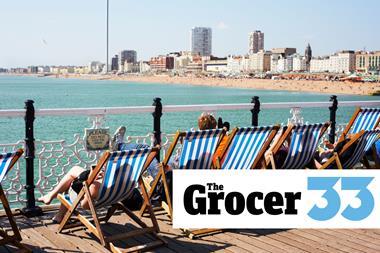Facing the UK’s Fourth Estate this week, a cheery Philip Clarke briefly started munching on some Everyday Value grapes as Tesco’s CEO outlined his vision, including a rounded £1bn plan to revive a UK operation that, while definitely not broken (even with a £100m decline, pre-tax profits were £2.5bn), is certainly in need of running repairs.
But despite trailing a lot of news, the presentation raised as many questions as it answered. While identifying that The Big Price Drop was “a good idea”, he said, “it hadn’t been sustained”. He didn’t like £5 off £40, he confessed, but having lost ground over Christmas, Tesco needed to be in the game. Other than that, there was no information on how Tesco would compete in the future on price - moot, given that even Ocado and Musgrave are giving it a run for its money.
Clarke also cryptically promised to “put Dunnhumby back at the centre of Tesco’s business” - a strange admission, we assume it refers to using Clubcard to compete, on its own technological terms, versus the Asda Price Guarantee and Sainsbury’s Brand Match, not to tailor demographic ranges or to dish out more points.
As to how long Clarke would remain CEO in the UK, he admitted it was not an ideal situation, but, “occasionally impatient”, needed to fix the mothership and quick. In fact, you might describe Clarke’s turnaround plan as a tango: slow (UK store expansion), slow (Fresh & Easy), quick (UK refurbishment), quick (click & collect), slow (bank).
The media saw the £1bn UK plan as a “gamble”. It would have been a far greater gamble, surely, if he had done nothing, or continued Tesco’s UK space race in the wake of slowing sales, and the incredible growth in online shopping. To me, the main question is whether Clarke’s spring clean is enough. The £200m on store refurbishment equates to £500,000 for each of the 400 stores earmarked.
By contrast, Marks & Spencer CEO Marc Bolland was boasting he had shaved half that amount off the £600m cost of its refurbishment plans. Let’s hope Tesco buys better.



















1 Readers' comment